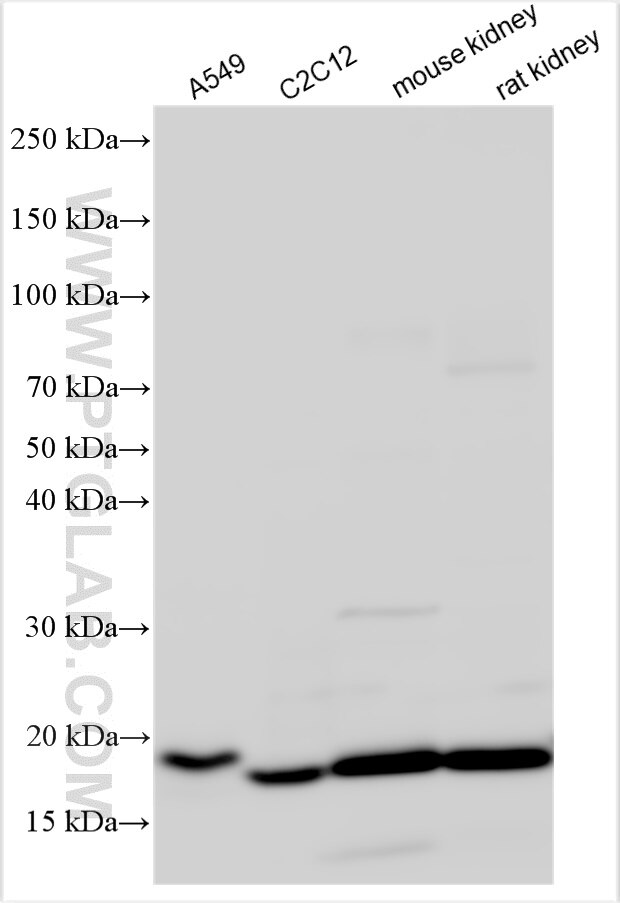C9orf89 Polyklonaler Antikörper
C9orf89 Polyklonal Antikörper für WB, ELISA
Wirt / Isotyp
Kaninchen / IgG
Getestete Reaktivität
human, Maus, Ratte
Anwendung
WB, ELISA
Konjugation
Unkonjugiert
Kat-Nr. : 20160-1-AP
Synonyme
Geprüfte Anwendungen
| Erfolgreiche Detektion in WB | A549-Zellen, C2C12-Zellen, Mausnierengewebe, Rattennierengewebe |
Empfohlene Verdünnung
| Anwendung | Verdünnung |
|---|---|
| Western Blot (WB) | WB : 1:1000-1:4000 |
| It is recommended that this reagent should be titrated in each testing system to obtain optimal results. | |
| Sample-dependent, check data in validation data gallery | |
Produktinformation
20160-1-AP bindet in WB, ELISA C9orf89 und zeigt Reaktivität mit human, Maus, Ratten
| Getestete Reaktivität | human, Maus, Ratte |
| Wirt / Isotyp | Kaninchen / IgG |
| Klonalität | Polyklonal |
| Typ | Antikörper |
| Immunogen | C9orf89 fusion protein Ag14084 |
| Vollständiger Name | chromosome 9 open reading frame 89 |
| Berechnetes Molekulargewicht | 228 aa, 26 kDa |
| Beobachtetes Molekulargewicht | 18-20 kDa |
| GenBank-Zugangsnummer | BC004500 |
| Gene symbol | C9orf89 |
| Gene ID (NCBI) | 84270 |
| Konjugation | Unkonjugiert |
| Form | Liquid |
| Reinigungsmethode | Antigen-Affinitätsreinigung |
| Lagerungspuffer | PBS with 0.02% sodium azide and 50% glycerol |
| Lagerungsbedingungen | Bei -20°C lagern. Nach dem Versand ein Jahr lang stabil Aliquotieren ist bei -20oC Lagerung nicht notwendig. 20ul Größen enthalten 0,1% BSA. |
Hintergrundinformationen
C9orf89 (also known as CARD19 or BinCARD) is a mitochondria-localized protein that inhibits BCL10-induced NF-κB activation mainly through its caspase recruitment structural domain (CARD). It plays a role in T cell receptor (TCR) signaling, but deletion of endogenous CARD19 has a lesser effect on Bcl10-dependent NF-κB activation. In addition, C9orf89 is expressed in multiple cell types and is involved in the regulation of inflammatory and immune responses.
Protokolle
| PRODUKTSPEZIFISCHE PROTOKOLLE | |
|---|---|
| WB protocol for C9orf89 antibody 20160-1-AP | Protokoll herunterladen |
| STANDARD-PROTOKOLLE | |
|---|---|
| Klicken Sie hier, um unsere Standardprotokolle anzuzeigen |


